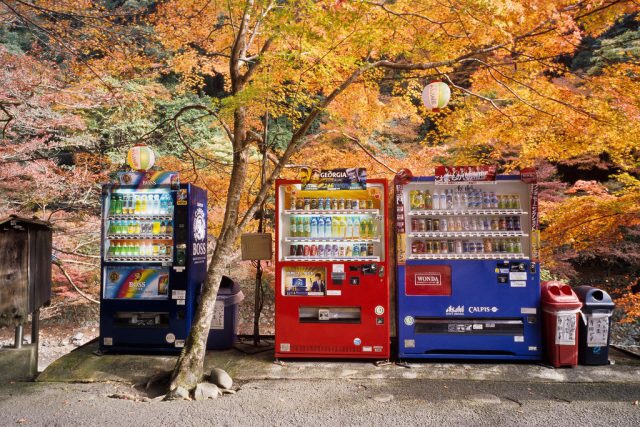Why Vending Machines Are So Popular in Japan ?
With nearly six million systems currently in operation across the country, Japan has the highest ratio of vending machines to landmass in the world. Renowned for its bizarre and futuristic technology, just why have these units ‘taken over’?

1.Post WWII growth
During the 1960s, Japan grew rapidly in the post-World War rebuild. In this time vending machines surged in popularity as they offered the public an easy means of shopping whilst giving vendors the opportunity to sell their products on a larger scale.
2.Key part of retail
Today Japan is home to many major beverage and tobacco companies. Vending machines have become a highly profitable means of distribution for these – the public is accustomed to not only seeing the systems but using them on a daily basis.
3.Low crime rate
Japan is known to have one of the lowest reported crime rates in the world: a stat that continues to decrease year on year. According to their national tourism organization, a big reason why they have so many vending machines is that the units can be left outside with little risk of being defaced or vandalized.
Right now, I am visiting New York. There are not many vending machines here like there are in Osaka, where I live. Surely, there must be a good reason for Japan having all those vending machines. Turns out, there are several.
The Wild and Wonderful World of Japanese Vending Machines Strolls through the cities. Stroll through the countryside. You’ll see ’em. Known as “jidouhanbaiki” (自動販売機) or by the shorter “jihanki” (自販機), the machines are a feature of the landscape wherever you go in Japan. The country has the highest ratio of vending machines to landmass in the entire world. As the country’s official tourist organization points out, Japan is currently home to 5.52 million vending machines. That’s a lot.
From the bread in a can to crepes, the country is home to an array of unusual vending machines. Vending machines have been used to sell questionable items, like hallucinogens and piracy devices. (Though, the infamous panty vending machines are more fiction than fact.) The vast majority either sell cigarettes or drinks (either cold or hot, soft drinks or alcohol). That’s somewhat fitting as the first vending machine in Japan, rolled out in 1888, sold cigarettes.
It was during the 1960s, as the country rapidly grew during the post-World War II years, that these machines also spread even further throughout the country, offering people an easy way to shop and vendors an easy way to sell.Japan is home to a slew of major beverage companies, including Suntory, Itoen, Kirin, Itoen, Calpis, and whatnot. Beverage companies need places to sell, well, their beverages. Vending machines are a convenient and easy way for them to do that. Ditto for Japan Tobacco and its cigarettes.
Since vending machines are now a key part of the country’s retail infrastructure, people are accustomed to not only seeing vending machines but using them. At this point, it’s less than vending machines are popular, and more that they are interwoven into Japanese society. Japanese people are not surprised the country has so many vending machines. They are surprised that other countries don’t.
These machines can sell both the product and the company itself. The sides of the machines clearly state either the beverage or the company’s name. That way, you not only know what kind of drinks are sold, but you get PR for corporate brands themselves, whether that’s Asahi or Calpis, or Dydo. In recent years, the vending machines themselves have become increasingly billboard-like, getting wrapped in anime, video games, or even American comic book characters.
Then, companies are also using these unattended sellers more as publicity stunts and less of an actual spot to buy a particular product. For example, women weren’t buying bras from a vending machine, but the lingerie company behind it was pushing it for PR.
video source – Bond Lingo
